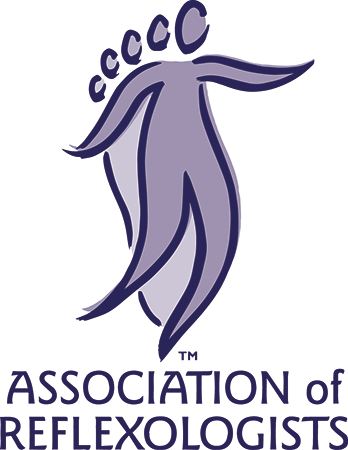
Reflexology
What is Reflexology?
Reflexology is a method of applying pressure to various zones or reflexes on both the sole and the top of the feet. Each reflex represents a corresponding area of the body; therefore by stimulating the reflex it is possible to stimulate the corresponding organ or body area.
By stimulating the reflexes on the feet, reflexology helps the body to release the energy blockages and find its natural equilibrium. Since reflexology treats the whole person, not the symptoms of disease, most people benefit from treatment. Reflexology can help you to maintain the homeostasis (the natural balance) of mind, body and spirit.
Reflexology balances energy to return the body to a state of equilibrium on a mental and emotional level as well as physical.
-
A treatment increases circulation even though only the feet are physically massaged. Stimulation of the circulatory points encourages a more effective circulation.
-
The lymph system is boosted which improves the immunity and the removal of toxins and impurities within the body.
-
Through the removal of toxins and impurities, the kidneys and digestive system activity improves.
-
It is a deeply relaxing treatment on both a mental and physical level.
-
Once the body is deeply relaxed, the body initiates its own healing forces. Reflexology doesn’t heal the body; it’s the body that heals itself.
-
The treatment increases the feeling of wellbeing as endorphins are released.
-
Pain is eased as the pressure points act to confuse the body, therefore interrupting the pain cycle.
-
It soothes and stimulates the nervous system.
-
There is a balancing effect on the endocrine system.
-
It is also shown that reflexology can affect the blood pressure, having a normalising effect.
I must point out that reflexology is not a diagnostic or curative therapy. It is used to complement a variety of health conditions. Although benefits are often felt after just one treatment, regular treatments will maintain the effects.
Will reflexology help me?
Reflexology is a very individual treatment. I will tailor your treatment by taking into account both physical and non-physical factors that might be affecting your wellbeing.
-
Anxiety and depression: Anxiety and depression are the most common mental health problems. The relaxation benefits of reflexology can decrease depression and anxiety.
-
Migraine and tension headaches: Reflexology massage can also effectively reduce tension and migraine headaches.
-
Reflexology can help reduce cancer treatment symptoms, including nausea, pain, constipation or diarrhoea.
-
Sinusitis is a chronic or acute condition often caused by another respiratory infection like the flu, a cold, or bronchitis. Reflexology can help improve chronic sinusitis.
-
Reflexology massage can help improve blood circulation in the feet and throughout the body.
-
Research has found that reflexology may be as effective as painkillers for osteoarthritis.
-
Reflexology has been found to reduce hypertension.
-
Multiple sclerosis: Multiple sclerosis is a progressive and chronic degenerative disease of the central nervous system. Regular reflexology treatments can help decrease fatigue in women with multiple sclerosis. It has also been shown that reflexology may reduce the tingling associated with multiple sclerosis.
-
Eliminates toxins: Reflexology can efficiently and effectively help remove toxins from the body.
What happens at the treatment?
At your first treatment I will take a full medical history, and ask you to sign a consent form for treatment. This information will be kept confidential. Before the treatment commences, we will discuss what you may experience and what your expectations are. Reflexology is a very easy therapy to receive; and the only clothing you will need to remove are your socks and shoes. The treatment will be given to you on the therapy couch.
The history of reflexology
Reflexology is an ancient practice and its history and origin is difficult to track, it is believed that knowledge was passed down orally and through practical tuition. The first recorded picture was found in 2330BC in the Physicians Tomb at Saqqara, Egypt. The painting portrays images of a person receiving foot therapy. There are also symbols recorded on the feet of statues of Buddha in India and later in China.
It is thought that Native American people used a form of reflexology by connecting the energies of the earth to mankind. The Cherokee Indians have practised a form of reflexology by putting pressure on the feet to heal and balance the body’s system.
In the United States, Dr. William H. Fitzgerald, who is often referred to as the father of reflexology, wrote in 1917 about the ten vertical zones that extended the length of the body. He discovered that the application of pressure to a zone that corresponded to the location of an injury could serve as relief of pain during minor surgeries.
Dr. Shelby Riley researched and expanded Dr. Fitzgerald’s work by developing a map of horizontal zones going across the body and a detailed map or reflex points on the hands and feet. He was also the first to discover and suggest pressure points on the outer ear.
Another prominent figure in the development of reflexology is a physiotherapist, Eunice Ingham. She worked for Dr. Riley and through her research she found feet to be the most sensitive and responsive to the zone therapy pressure points. In fact it was Eunice Ingham who developed the foot maps and reflexology charts still in use today. She also introduced reflexology practices to the non-medical community in the 1930s.
Doreen Bayly brought Eunice Ingham’s reflexology to England after training with her in the early 1960s. She held many training courses and founded The Bayly School for Reflexology in 1978. Doreen Bayly is considered to be the pioneer of reflexology in Great Britain.


